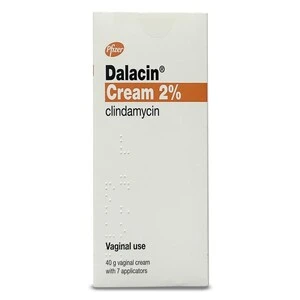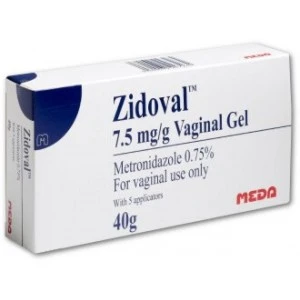Why Do I Keep Getting Bacterial Vaginosis?
If you have recently finished a course of treatment for bacterial vaginosis (BV) only to find yourself greeted with it again a couple of weeks later, then don’t worry – you’re not alone.
Although the cure rate for BV is relatively high, with a standard prescription of the antibiotic metronidazole seeing cure rates of around 80%, research shows that 50% to 80% of women will get recurring bacterial vaginosis within 6 to 12 months, meaning that well over half of women who experience BV will get it again.
There are several factors that can explain why BV keeps coming back, some of which are self-manageable, while others are beyond the individual’s control. This article outlines some of the most common reasons for BV recurrence, helping you better manage a current or future infection, and, more importantly, find answers to that burning question, ‘Why do I keep getting bacterial vaginosis?’
What is Recurring Bacterial Vaginosis?
Recurring bacterial vaginosis occurs when bacterial vaginosis, a common condition caused by an imbalanced vaginal microbiome, returns within 3 months of antibiotic treatment or at least four times a year, with at least two instances identified through vaginal swab tests. It is a very common condition, with clinical trials showing that 58% of people will get recurring BV.
If your BV keeps coming back, it's important to note that this is not medically serious. However, it can be frustrating, especially if you experience symptoms, such as abnormal and/or unpleasant-smelling vaginal discharge. It is important that you get appropriate treatment from a clinician to help get rid of the infection.
Why Do I Keep Getting BV?
It’s common to get recurring BV, even if you’ve made changes to your lifestyle to prevent it from returning, and there are several potential reasons why bacterial vaginosis keeps coming back. From having multiple sexual partners to using a copper IUD for contraception, we explore some of the common reasons for its return below.
Metronidazole
- A first-line antibiotic recommended by the NHS
- Decades of clinical success
- Simple and convenient to use
Multiple Sexual Partners
While BV is not considered to be an STI due to the fact that it can be contracted without engaging in sexual intercourse, there is strong evidence to suggest that having multiple sexual partners and engaging in female-female sexual relationships increases the chance of developing BV.
This is due to a multitude of factors, including the:
- Increased disturbance to the vaginal microbiome.
- Alteration of the vagina’s bacterial flora through the more alkaline pH of semen.
- The increased likelihood of the introduction of BV via a new partner
A review including 43 studies found that women with new or multiple male partners had a 1.6 times higher risk of BV. Those with female partners had a 2.0 times higher risk. Condom use was linked to a lower risk, with a relative risk of 0.8.
The review concluded that BV was significantly associated with sexual contact with new and multiple partners of both sexes.
Although this will be outlined fully at the end of this article, measures to prevent the spread of BV include reducing the number of sexual partners you might have and using condoms in heterosexual relationships. It is also recommended that individuals familiarise themselves with the symptoms of BV so that it can be identified and treated as soon as possible. Finishing a course of prescribed antibiotics is similarly paramount to prevent further spread.
Regular Female Partners
In women who have sex with women (WSW), regular female partners frequently have concordant vaginal microbiota due to the regular transfer of secretions, so if one has BV, the partner is more likely to also have BV. Research suggests that BV rates are highest amongst women who have sex with women, with estimates ranging between 25% and 52%. One study found that BV in women who have sex with women was more likely if they:
- have a new sexual partner
- have a partner who has BV symptoms
- receive oral sex and then develop BV symptoms
If a WSW is found to have BV, and she has a regular female partner, it would be reasonable to suggest that her partner be checked for BV and treated if positive. There is, however, no evidence that this will reduce BV recurrence.
Diminished Bacterial Immunity
Unfortunately, if you have bacterial vaginosis once, not only are you more likely to get it again, but you are also more at risk of acquiring subsequent STIs. Although the link between repeated bouts of BV is still not fully understood, the onset of other STIs is likely due to the decrease in the healthy bacteria, Lactobacilli. During a bout of BV, abnormal anaerobic bacterial strains can increase by up to 1,000%. This bacterial imbalance leaves the vagina more at risk of further infection, with one study finding that 16% of women with BV were diagnosed with an STI within 2 years.
Studies have found that women with BV have a higher risk of contracting the following STIs when compared to individuals who have not had the condition:
- 13% increased risk of chlamydia
- 26% increased risk of gonorrhoea
- 60% increased chance of HIV-1
- 9-fold risk of contracting Trichomonas Vaginalis (TV)
- 2.5-fold increased risk of HIV acquisition
- 1.28-fold risk of acquiring HSV-2 (Genital Herpes)
BV's recurrence can also be a result of diminished bacterial immunity resulting from a course of antibiotic treatment. As antibiotics target all bacteria to treat an infection, they can reduce the level of ‘good’ bacteria (in this case, Lactobacilli) as well as the ‘bad’.
Dalacin (Clindamycin) 2%
- Inhibits the growth of bacteria in the vagina
- Easy application
- Discreet delivery
Having a Copper IUD
Women who use the copper intra-uterine device (IUD) as their preferred method of contraception are at an increased risk of BV. Studies show that those who use a copper IUD have a 1.28-fold increased risk of the infection compared to those who either use no contraception or non-hormonal options.
A study conducted by Hillier and colleagues found that women who chose a copper IUD as a birth control method had a BV prevalence of 27% at baseline, 34% at 30 days, 39% at 90 days, and 44% at 180 days compared to no change in BV prevalence in women given a hormonal contraceptive. As Dr Hillier states in response to her study, ‘the increased risk is probably because IUDs cause heavier and longer menstrual bleeding, which is known to disturb the vaginal microbiome’ - leading to fluctuations in lactobacilli levels and the increased ability for harmful bacteria to overpower the good bacteria.
The National Institute for Health and Care Excellence (NICE) suggests that for those whose bacterial vaginosis keeps coming back while fitted with a copper IUD, removing the device and considering a different mode of contraception may be the most beneficial option. However, as with any change in contraceptive method, if you are considering this option, you are advised to seek the advice of your GP beforehand to discuss in detail alternative modes of birth control. For anyone who does go ahead with removal, it is integral to continue the use of condoms to prevent the spread of other STIs and any unwanted pregnancies.
How to Stop Recurring BV
If you’re prone to recurring bacterial vaginosis, antibiotic treatment will not stop it from coming back in the future. However, there are several things you can do to lower the chance of recurrent BV. Lifestyle changes and completing your antibiotic course are just some of the things you can try.
Other things you can do to stop recurring BV from coming back include:
- Avoid perfumed soaps, shower gels, shampoos, and bubble baths: These can disrupt the vaginal microbiome and promote the growth of bad bacteria, leading to BV.
- Wear cotton underwear: Opt for cotton underwear instead of tight-fitting or synthetic fabrics, as these can increase moisture and increase the risk of infection.
- Always use a condom: Use a condom if you get BV after having sex with a man.
- Change your sanitary products often: Changing tampons or pads regularly can help, especially if your period is triggering BV.
- Avoid vaginal deodorants, douches, or washes: These can disrupt the vaginal microbiome, resulting in recurring BV.
- Quit smoking: Smokers have a lower abundance of vaginal Lactobacillus, so giving up smoking may help prevent recurring BV.
Zidoval
- Clears infection
- Easy application
- Discreet delivery
Frequently Asked Questions
Recurring bacterial vaginosis is problematic for many people and can interfere with the quality of your daily life, especially if you are experiencing symptoms. It is important that you get treatment for BV from a healthcare professional to help get rid of it and stop it from coming back. Here we answer some of the most common recurring BV-related questions.
What are the Symptoms of Bacterial Vaginosis?
50% of women do not get any bacterial vaginosis symptoms, which can make it difficult to diagnose. However, some women will get symptoms, although they do not usually include itching or soreness around the vagina. The most common BV symptoms are:
- vaginal discharge that is watery, thin, and/or greyish-white
- vaginal discharge that has a strong fishy smell, especially after sex
Why Do I Keep Getting BV with the Same Partner?
It’s possible that bacterial vaginosis keeps coming back with the same partner because semen can change the vaginal pH, promoting the growth of BV-causing bacteria. BV is not considered an STI, but your partner can act as a reservoir for bacteria, meaning it can be passed back and forth during sex.
To prevent BV from coming back, it can help to use condoms each time you have sex, maintain good genital hygiene, and finish the course of BV antibiotics.
What Treatments are Available for BV?
Bacterial vaginosis is usually treated with oral antibiotic tablets, or vaginal gels or creams that are applied directly inside the vagina to treat the infection at the source. If you keep getting BV, you may be given vaginal gel for a few months to stop BV from returning.
At Prescription Doctor, we can prescribe the following bacterial vaginosis treatments:
- Dalacin cream: A vaginal cream that contains 2% clindamycin that works by stopping the growth of BV-causing bacteria.
- Metronidazole tablets: Oral tablets that contain the active ingredient, metronidazole, and are more than 90% successful at clearing the infection.
- Zidoval vaginal gel: A vaginal gel that contains metronidazole that works by changing the BV-causing bacteria’s DNA so that it can no longer multiply, killing the infection.
Is Recurring Bacterial Vaginosis Dangerous?
No, bacterial vaginosis is not usually dangerous if it is treated. However, recurrent BV can make you more susceptible to STIs because the infection lowers your body’s ability to fight infections and reduces the acidity of your vagina.
If you are pregnant and have bacterial vaginosis, it is important that you get treatment to lower the chance of complications, such as early labour or miscarriage. Most pregnant women with BV do not get complications, but effective treatment is important.
Effective Relief from Recurring Bacterial Vaginosis
Several factors can contribute to recurrent BV infections. Once you identify what triggers it, you can take precautionary steps to minimise your risk of experiencing another bout of bacterial vaginosis. For further advice on how you can prevent bacterial vaginosis, speak to your doctor or gynaecologist. There's also a wealth of knowledge readily available from the NHS website, which details common causes of bacterial vaginosis and what you can do to reduce your risk.
Recurring bacterial vaginosis can be frustrating, but it doesn’t have to rule your life. Beat the NHS queues and request effective antibiotic BV treatments from Prescription Doctor. Our clinicians can prescribe the same treatments as your GP for recurring BV and have them delivered in discreet packaging to your home address, ensuring 100% confidentiality. Orders approved before 3pm on a weekday are also eligible for next-day delivery, so you can receive your treatment quickly and get on with your life.
Does your bacterial vaginosis keep coming back? Need effective treatment fast? Start your online consultation now.
Sources
- American Journal of Preventive Medicine (2017). Association of Bacterial Vaginosis With Chlamydia and Gonorrhea Among Women in the U.S. Army.
- Clinical Infectious Diseases (2020). Elevated Risk of Bacterial Vaginosis Among Users of the Copper Intrauterine Device: A Prospective Longitudinal Cohort Study.
- Clinical Infectious Diseases (2015). Incident Bacterial Vaginosis (BV) in Women Who Have Sex With Women Is Associated With Behaviors That Suggest Sexual Transmission of BV.
- Clinical Infectious Diseases (2008). Sexual Risk Factors and Bacterial Vaginosis: A Systematic Review and Meta-Analysis.
- Frontiers in Reproductive Health (2023). Bacterial vaginosis: a review of approaches to treatment and prevention.
- Journal of Lower Genital Tract Disease (2014). Effects of Probiotics on the Recurrence of Bacterial Vaginosis: A Review.
- MDedge (2017): Copper IUDs increase bacterial vaginosis risk.
- Nature (2019). Sexual practices have a significant impact on the vaginal microbiota of women who have sex with women.
- NICE (2023): Bacterial Vaginosis.
- NIH (2022). Bacterial vaginosis: Learn More – Which treatments are effective in bacterial vaginosis?
- NIH (2002). Bacterial Vaginosis as a Mixed Infection.
- PLOS Medicine (2012). Bacterial Vaginosis Associated with Increased Risk of Female-to-Male HIV-1 Transmission: A Prospective Cohort Analysis among African Couples.
- PubMed (2020). Brief Report: Bacterial Vaginosis and Risk of HIV Infection in the Context of CD101 Gene Variation.
- PubMed (2011). Bacterial Vaginosis and Risk for Trichomonas Vaginalis Infection: A Longitudinal Analysis.
- PubMed (2011). Severity of Bacterial Vaginosis and the Risk of Sexually Transmitted Infection.
- The Journal of Infectious Diseases (2013). Incident Herpes Simplex Virus Type 2 Infection Increases the Risk of Subsequent Episodes of Bacterial Vaginosis.
- The Journal of Infectious Diseases (2006). High Recurrence Rates of Bacterial Vaginosis over the Course of 12 Months after Oral Metronidazole Therapy and Factors Associated with Recurrence.
Authored By

Leanne Edermaniger
Medical Content WriterPublished on: 08/11/2019 Re-Published on: 16/09/2025
Reviewed By

Mohamed Imran Lakhi
MPharm - Lead PharmacistReviewed on: 16/09/2025
© 2013 - 2025 Al Muhsineen Limited. All Rights Reserved. Registered Pharmacy: 34 Halliwell Road, Bolton BL1 8RL. Registered Office: 254 First Floor, Shearbrow, Blackburn, England, BB1 8DS








